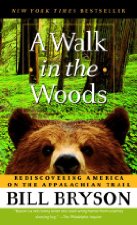After reading tons of articles about Battle Hymn of the Tiger Mother and hearing all the pros and cons and rebuttals about Amy Chua's book on the Chinese way of parenting, I read it fully expecting to get her humor and fall in love with Amy Chua. Amy was quoted again and again saying that no one understood her and that the WSJ (the publication that first reported on her book) only pulled out the most salacious parts of her book and no one got that she was humbled in the end. In interviews she kept talking about how funny the book was meant to be.
But I must say I have never read a memoir where I so thoroughly detested the narrator and even when she got her comeuppance and realized the error of her ways she still contended that her way is better and the rest of us western parents are just stupid. So even after she was humbled she still acted like she was superior. There were, perhaps, two spots in the narrative where I thought I detected a bit of humorous hyperbole, but it was really overshadowed by her horrible personality.
That being said, this is a well written book with a completely different perspective on culture and parenting and is worth reading simply to have that perspective. I found Chua's tale to be incredibly riveting and her voice to be clear and compelling. I don't think I have ever read anything that so concisely summed up the differences between east and west. It was simply unusual to have such an unsympathetic narrator.
Sad to say, I could never, even in my wildest dreams be a tiger mother. Poor Miss T will really miss that part of her heritage (though I tend to doubt it). A better summation of this method of parenting is that it is the best parenting method for raising violin or piano prodigies. However, if you want your kids to have a sweet carefree child hood where kids can play and discover and create and make friends and learn to navigate the real world, Western parenting seems to be the better route--with some modifications perhaps.
The whole story kept me wondering about three things: 1) Not every kid can be number one. Pity the kids who have more than one tiger mom in the same town or small school. 2) How will her kids parent their kids one day? I may have to wait a few years for Sophia's and Lulu's memoirs. 3) How munch money will they have to spend on therapy to erase years of stress and psychological abuse heaped upon them by their mother?
There were also a couple of interesting stories within the memoir that were only hinted upon. Amy's sister makes an appearance at the end. She is very ill and perhaps dying of cancer. She is also the parent of two small children. Is she a tiger mom as well? And in one totally fascinating aspect of the tiger mom phenomenon, Amy's mother, the original tiger mom, manages to love and raise a Down's Syndrome child (in China disabled children are often killed or abandoned. It is very un-chinese to show any care or attention to a handicapped child.) The Down's Syndrome child plays piano! No doubt owed to the tireless efforts of this method and the mother. Perhaps in some weird way, this method does show love.
Though I guess I will continue to show my love by taking family hikes and trying my best not to be a yeller and letting my kids choose their hobbies and interests.
How about you? Love to hear from people who are Tiger Parents...
Wendy Kozol’s The War In-Between
3 weeks ago







